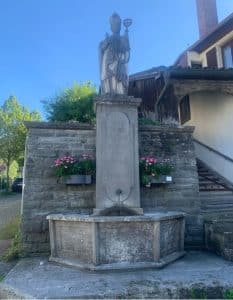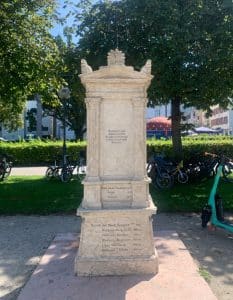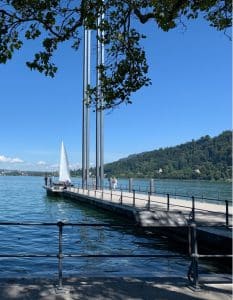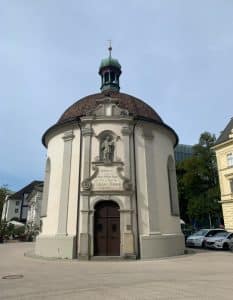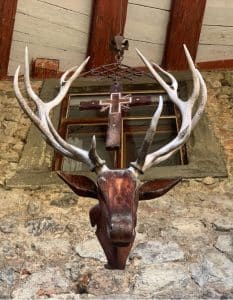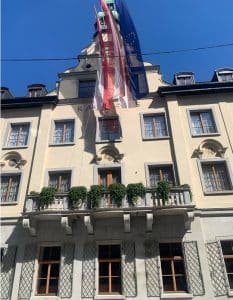Located on the eastern shores of Lake Constance, Bregenz is a city steeped in history and culture. One of its most iconic landmarks is Molo, a floating stage that hosts some of the world’s most renowned operas and plays during the annual Bregenzer Festspiele (Bregenz Festival). This article will delve into the unique charm and historical significance of this architectural marvel.
The History of Molo
Molo has been an integral part of Bregenz’s cultural scene since 1946 when it was first established as a venue for theatrical performances. The original structure was built on wooden piles driven into the lake bed, providing audiences with an unparalleled open-air theatre experience against the backdrop of Lake Constance.
In 1979, due to increasing popularity and demand for larger productions, plans were initiated to design a new stage that could accommodate more complex sets. After several years of planning and construction, the new floating stage – known today as Molo – was unveiled in 1985. Since then, it has undergone periodic renovations to incorporate modern technology while preserving its historic character.
Architectural Marvel
The architecture behind Molo is nothing short of impressive. It measures approximately 40 meters high by 20 meters wide by 70 meters deep – equivalent to about two-thirds size football field! The structure floats on steel pontoons anchored securely to withstand wind speeds up to force eight gales without movement or damage.
One notable feature is its adjustable roof which can be raised or lowered depending upon weather conditions ensuring performances are rarely interrupted by inclement weather. Moreover, state-of-the-art acoustics ensure every seat provides excellent sound quality despite being outdoors.
Bregenzer Festspiele: A Cultural Extravaganza
Molo is best known for hosting the Bregenzer Festspiele, a summer festival of opera and music that attracts thousands of visitors from around the world. Since its inception in 1946, this event has grown to become one of Europe’s most prestigious cultural events.
Each year, a different opera or play is performed on Molo over several weeks. Past productions have included classics like Giuseppe Verdi’s “Aida” and Georges Bizet’s “Carmen,” as well as contemporary pieces such as Philip Glass’s “The Voyage.” These performances are renowned for their elaborate sets which often incorporate elements of Lake Constance itself into their design.
A Unique Experience
Attending a performance at Molo offers an experience unlike any other theatre venue in the world. As dusk falls over Lake Constance, audiences find themselves immersed not only in captivating performances but also in breathtaking natural scenery. The combination of top-class operas and plays with stunning lake views under starlit skies makes for an unforgettable evening.
Visiting Molo
If you’re planning to visit Bregenz during the festival season (July-August), it’s advisable to book your tickets well in advance due to high demand. However, even outside these months, guided tours are available where you can explore this impressive stage up close and learn about its fascinating history.
In conclusion, whether you’re an avid theatre-goer or simply appreciate unique architecture and beautiful landscapes – a visit to Molo should be on your itinerary when exploring Bregenz!
Frequently asked questions
What is Molo in Bregenz and where is it located?
Molo is a popular floating stage (Seebühne) that resides on Lake Constance in Bregenz, Austria. This unique venue hosts the annual Bregenzer Festspiele (Bregenz Festival), which draws large crowds for its spectacular opera performances. The Molo itself can be found at Platz der Wiener Symphoniker 1, 6900 Bregenz, Austria.
What makes Molo special among other performance venues?
The uniqueness of Molo lies in its location and design. It’s one of the world’s largest floating stages with space to accommodate an orchestra of more than 80 musicians. Its changing sets are known for their artistic grandeur and technical innovation, reflecting themes from selected operas each year. Watching a performance here offers a blend of high-quality acoustics and breathtaking views over Lake Constance under open skies.
How can I get tickets to see a show at Molo in Bregenz?
Tickets for performances at the Seebühne can be purchased directly from the official website of the Bregenzer Festspiele or through authorized ticket agencies. Early booking is highly recommended due to high demand during festival season which typically runs from July through August.
What should visitors know about attending an event at Molo?
All performances take place outdoors regardless of weather conditions so attendees should dress appropriately for potential changes in weather throughout the evening – warm clothing and rain protection are advisable. Also note that seating begins approximately one hour before each performance starts; latecomers will not be admitted until intermission as per international theatre regulations.
Can you tell me more about the history of this floating stage?
The Seebühne, or floating stage, was first introduced in 1946 as part of the inaugural Bregenz Festival. The original stage was a simple wooden structure but it has evolved over time into an architectural marvel that changes with each festival season. Some notable designs include a giant book for “Tales from the Vienna Woods”, and a massive pair of eyes for Giacomo Puccini’s opera “Turandot”. Each year’s new design becomes a much-anticipated reveal adding to Molo’s charm and reputation.




